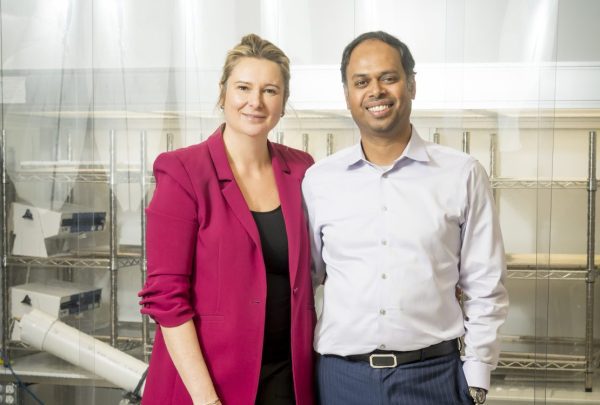State of the Heart

On a brisk spring morning in 2018, Saravana ’03 M.S. and Katherine ’03 M.S., ’05 Ph.D. Kumar said goodbye to their two young children and left their home in Minnesota on one of the most high-stakes road trips of their lives. Their destination was a hospital in Quebec City where a 77-year-old patient was preparing to undergo surgery for a chronic heart condition.
The patient had never met the Kumars before, but the husband-and-wife team already knew a lot about him. They knew he was suffering from a condition called mitral regurgitation, a common type of heart valve disease that results in blood leaking backward into the heart each time it pumps. They knew that the condition was leaving the patient tired and out of breath, and if left untreated, would significantly increase his risk of death.
They also knew the man had agreed to undergo a first-in-the-world transcatheter treatment procedure that had been approved through Canada’s special access program, which allows patients to opt-in to receive medical treatments that show promise but have not yet been approved for sale. The procedure was important to him not only because it would reduce the risk of life-threatening complications from his disease; it also meant he’d be able to fully participate in his son’s upcoming wedding.
In the back of their car, Saravana and Katherine Kumar were carrying a new device called the AltaValve that they hoped would provide relief to the patient in Quebec and eventually to millions of other mitral regurgitation patients around the world. Over the previous two years, Saravana, Katherine and a small team of collaborators had started a company called 4C Medical and brought the AltaValve from an idea on the back of a napkin to a prototype built in their garage to a bonafide medical device that had shown remarkable results in animal studies. Now, they were preparing for their biggest test yet: implanting the device in a human patient for the first time.
Read more on Inside UNC Charlotte.